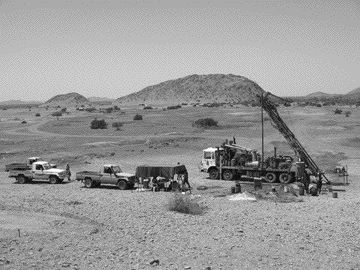Nevsun Resources (NSU-T, NSU-X) is poised to become the first Western company to build a mine in Eritrea.
The northeastern African country — which only won its independence from neighbouring Ethiopia in 1993 — has given Nevsun’s Eritrean subsidiary, Bisha Mining Share Co. (BMSC) a mining licence for the Bisha project. The Eritrean government holds a 40% interest in BMSC.
The licence is for 16.5 sq. km of the total 39-sq.-km property, but is enough to cover the Bisha Main zone and the Northwest zone deposits.
“The government of Eritrea continues to show its strong support to the redevelopment of mining as an important sector of its national economy,” Nevsun declared in a statement.
With the agreement secured, Nevsun will now zone in on securing the debt financing it needs to build the mine. A feasibility study from the end of 2006 estimated the total cost of the project at US$200 million.
Mitigating some of that cost for the Vancouver-based company, however, is an agreement reached with the government in October 2007. Not only does the deal require the government to pay Nevsun US$25 million by the end of this month, but it also requires the government to put US$1 into development for every US$3 spent by Nevsun.
In return, the government received an additional 30% stake in the project to the 10% free interest it already held by virtue of the country’s mining legislation.
At current metal prices, Nevsun estimates the project’s payback period will be less than one year.
“The success of the Bisha mining project has a special significance both for its economic benefits and trendsetting effects on the path of the industry we are very eager to develop in Eritrea,” said Energy and Mines Minister Tesfai Ghebreselassie in a prepared statement in early December. “I would like to reiterate our government’s commitment to do all within its means to assist Bisha Mining Share Co. to be a success story.”
The Bisha deposit is made up of three distinct layered zones and four major minerals. The 35-metre oxide zone is rich in gold and silver, while the 30-metre supergene zone beneath it is rich in copper. The primary sulphide zone beneath that has both zinc and copper. Byproduct gold and silver are recoverable from both the supergene and primary ores.
In the oxide zone, the deposit hosts 4 million tonnes grading 7.99 grams gold per tonne and 32.85 grams silver in proven and probable reserves.
The supergene zone has 6.3 million tonnes grading 4.4% copper, 0.83 gram gold and 35.98 grams silver in the proven and probable categories. And the primary sulphide zone has 9.7 million proven and probable tonnes grading 7.21% zinc, 1.14% copper, 0.76 gram gold and 54 grams silver.
Processing will start in the surface oxide zone with gold being extracted by conventional cyanide leaching and recovered by the carbon-in-pulp process. A copper flotation plant will be built as the oxide ore is depleted to treat supergene and primary ore. As supergene ore is exhausted, extra flotation equipment needed for zinc recovery from primary ore will be commissioned.
That means gold and silver will be produced for the first two years, with copper concentrate production beginning during the second year and ramping up through years three to five, with zinc production coming on-line in years six to 10.


Be the first to comment on "Nevsun’s Bisha project gets green light in Eritrea"